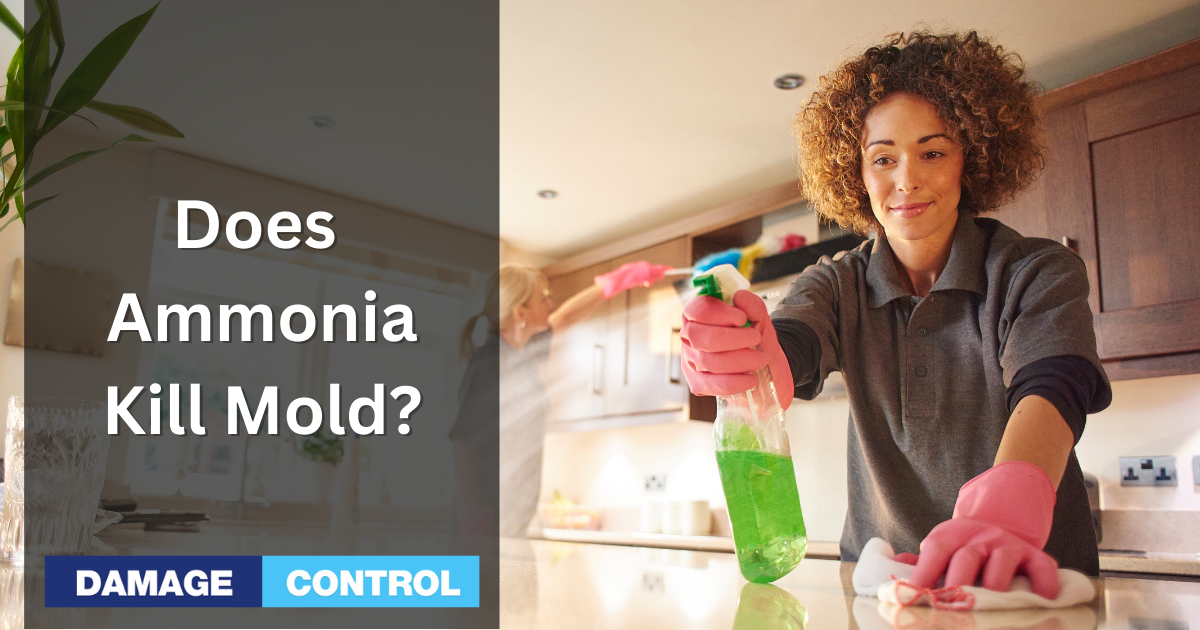Ammonia can eliminate mold on solid, non-porous surfaces like countertops, glass, and tiles. The technique does not work well on porous surfaces like wood or drywall.
When you have mold in your home, you must get rid of it. There is no co-existing with mold or mitigating its presence. It has to go. Getting rid of mold does not have a blanket, one-size-fits-all solution because each home is unique, and the cause of the mold varies from place to place.
Some tools and cleaning solutions have become very popular because they have proven effective, people-friendly treatments for killing and cleaning mold. One tool that has struck the curiosity of many homeowners is ammonia. Here, you will learn whether or not ammonia kills mold, how effective it is, and when the best time to use it (or not use it) is. Professionals do not use common household products during the mitigation process.
What is Ammonia?
Ammonia, or NH3, is a chemical compound of Nitrogen and hydrogen. Ammonia is technically a colorless gas. Ammonia is easily identifiable by its particularly pungent smell.
Does Ammonia Kill Mold?
To put it simply, yes, ammonia will kill mold. However, not all methods are created equal. For example, you can kill mold in the home if you raise the inside temperature above 140 degrees for a certain amount of time, but it's not practical or safe for the average homeowner.
First, you must understand that while ammonia will kill mold, it will only do so on non-porous surfaces. If you try to use ammonia to clean mold off of wood, for example, you will have to contend with mold on that wood later. Ammonia cannot get deep enough into the material to kill the seeped mold.
If you are dealing with surface mold that has appeared on laminate flooring, tile, porcelain, granite, acrylic, or ceramic, then ammonia can kill that mold quickly. However, surfaces such as wood will require other solutions.
How To Use Ammonia To Kill Mold
If you will attempt to use ammonia to kill mold, you must be smart and follow safety precautions. Before using ammonia, you must ensure you have the right safety gear.
What You Need
- Ammonia
- Distilled Water – Buy locally or make your own
- Spray bottle
- Gloves – Vinyl, Latex, or Latex-free
- Safety Goggles
- Respirator

We are a participant in the Amazon Services LLC Associates Program, an affiliate advertising program designed to provide a means for us to earn fees by linking to Amazon.com and affiliated sites.
Ventilate The Space
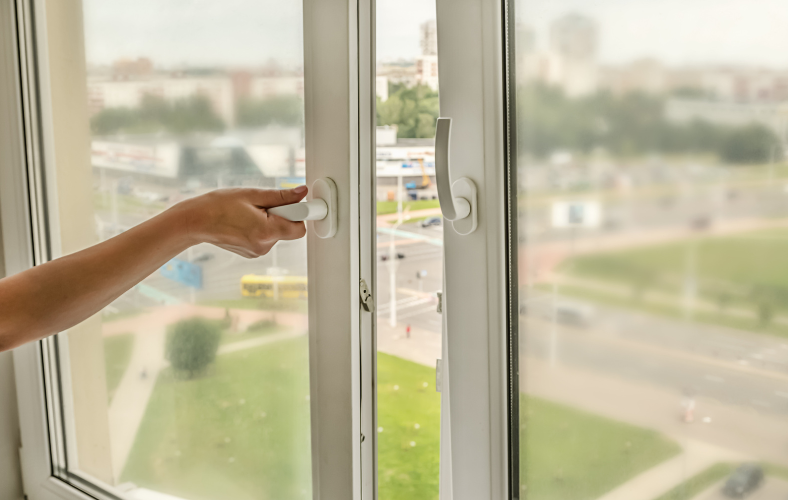
Open the window. Remember, ammonia has a powerful, pungent smell that is not for the faint of heart and can damage your lungs with prolonged exposure. Ensure you're also wearing your respirator; it's an inexpensive item every household should have.
Mix Your Cleaning Solution
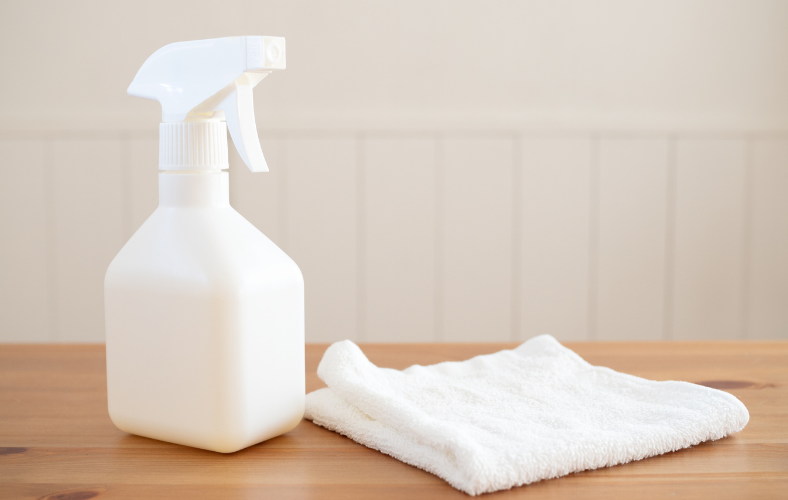
You want to mix your household ammonia with distilled (yes, it must be distilled!) water in order to dilute it. You want the mix to be 50/50 between ammonia and distilled water.
Spray The Affected Area
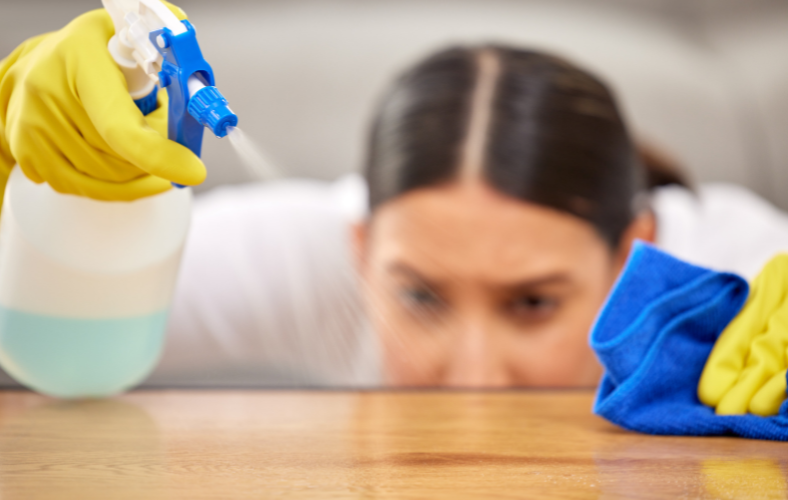
Spray down the surface you wish to clean with your mixture and set it up for 2 or 3 hours. If you have errands to run this may be a good opportunity for you to do while you wait.
Rinse The Surface
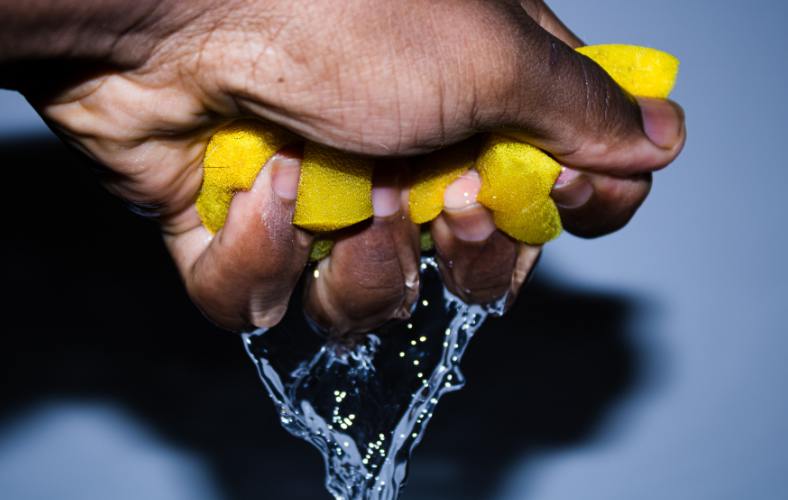
Once the cleaning solution is set, you need to wipe the area down and then clean the surface with water.
Benefits of Using Ammonia
One of the best things about ammonia is that it is relatively cheap. You can make a large batch of cleaning solutions for a small amount of money. It is also guaranteed to kill mold on any non-porous surface you apply it to.
Drawbacks of Using Ammonia
The biggest problem with ammonia is that it can be overkill compared to other cleaning solutions, such as white vinegar. There is also so much that can go wrong when using ammonia. Perhaps one of the worst drawbacks to using ammonia, especially if you have a pet, is that the smell of it will attract animals to urinate where it was used. That undoes the entire point of using ammonia, to begin with.
What Not to Do With Ammonia
As previously stated, you do not want to use ammonia on any porous surface as it will ultimately only be a waste of time.
However, you should also not use ammonia to get mold out of clothing. The reason is that the water that goes into your washing machine is likely chlorinated unless you have a filter that blocks chlorine. Mixing chlorine and ammonia creates a toxic fume that can make you sick.
There are other effective cleaning methods to eliminate fungi from your wardrobe without running the risk of getting you and your family sick.
What Can I Use Instead of Ammonia to Kill Mold?
There are numerous different cleaning solutions you can use besides ammonia. Here are some of the main alternatives to Ammonia:
Bleach – Bleach is a common go-to solution for DIY mold remediation projects. However, it is an unappealing aromatic and volatile chemical and not usable on porous surfaces. It cannot be recommended for all situations.
White Vinegar – If there is an undisputed cleaning agent king, it must be white vinegar. White vinegar is very potent, so it must be diluted at a 50/50 ratio with water. Unlike bleach and ammonia, white vinegar can clean porous surfaces. This is a major advantage over bleach.
Essential Oils – Essential oils, when used properly, can kill the spores in the air before they start colonizing. Pretty cool, right?
Conclusion
Using ammonia to kill mold can be cheap, but it may not work for all situations. There are safety concerns, but like anything else, as long as you use the proper methods and follow the recommended guidelines for ammonia usage, you'll be fine.
References
- American Lung Association. (2021). Cleaning to prevent the spread of COVID-19. Retrieved July 28, 2024, from https://www.lung.org/lung-health-diseases/wellness/preventing-covid-19/cleaning
- Centers for Disease Control and Prevention. (2021). Mold cleanup and remediation. Retrieved July 28, 2024, from https://www.cdc.gov/mold/cleanup.htm
- Environmental Protection Agency. (2023). Mold remediation in schools and commercial buildings. Retrieved July 28, 2024, from https://www.epa.gov/mold/mold-remediation-schools-and-commercial-buildings-guide
- National Center for Healthy Housing. (2019). Do’s and don’ts of mold. Retrieved July 28, 2024, from https://nchh.org/resource-library/fact-sheet_do-donts-of-mold.pdf
- Occupational Safety and Health Administration. (2022). Safety and health topics: Mold. Retrieved July 28, 2024, from https://www.osha.gov/mold

